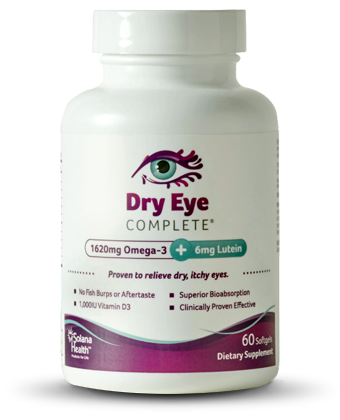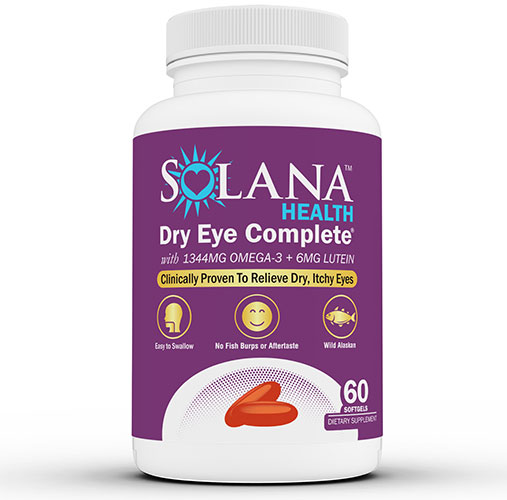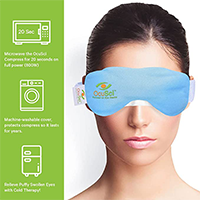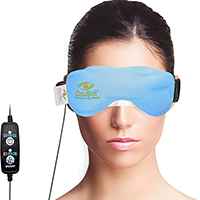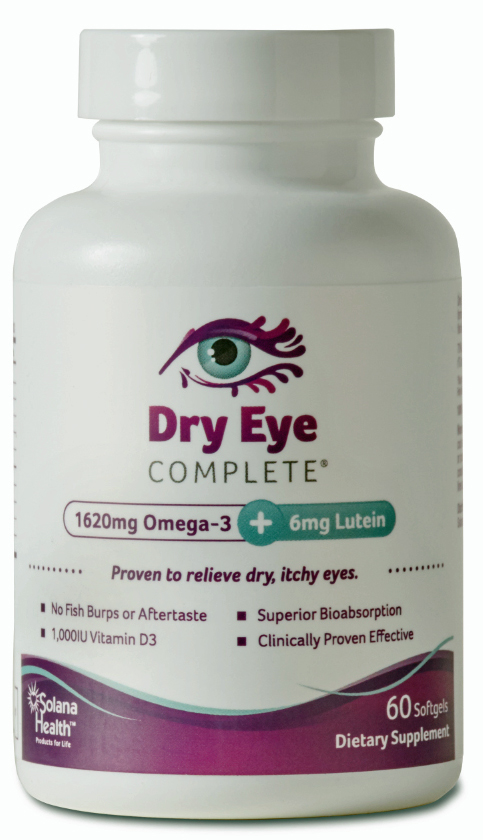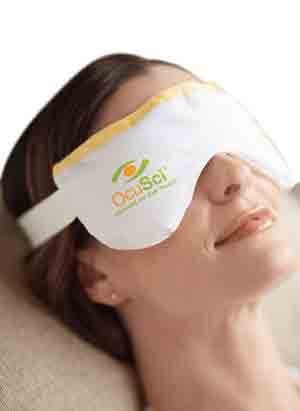Photophobia is not a fear of light, as the name might suggest, but rather it is an intolerance or sensitivity to light that can lead to extreme pain and discomfort. Sources of light such as fluorescent light, sunlight, and incandescent light can all be responsible for causing discomfort, and headaches are frequently associated with light sensitivity.
One important fact to keep in mind is that photophobia is not a form of eye disease. Instead, it is a symptom of some other condition such as inflammation or infection, which can irritate the eyes. Light sensitivity can also be a symptom of underlying diseases that wouldn’t directly impact the eyes, such as a disease caused by a virus.
Causes of Photophobia
While there are many different factors and causes that can be associated with photophobia, it is most commonly a symptom of another disease or condition, such as dry eye syndrome. Photophobia can happen to people of both sexes and all ages, and it can either be temporary or constant. Some research has suggested that people with lighter eye colors may be prone to experiencing more instances of light sensitivity in certain environments with a significant amount of sunlight. This is because people with darker colored eyes have more pigment available to protect them against harsh lighting.
Other common causes of photophobia may include issues such as uveitis, central nervous system disorders such as meningitis, and corneal abrasion. Light sensitivity can also be associated with irritations that occur as a result of poor contact lens application, refractive surgery, sunburn, or detached retinas. Photophobia is also frequently experienced by people who have albinism (a lack of eye pigment), complete color deficiency – wherein patients can only see shades of grey, rabies, botulism, mercury poisoning, keratitis, conjunctivitis, and iritis.
In some circumstances, photophobia occurs as a result of abnormalities located towards the front of the eye. This happens because the cornea and tear ducts have not worked together properly in order to create a lubricated and smooth surface that can be used to properly focus light. There are a wide range of nerve endings and pain receptors in the cornea, which means that irregularities in this area generally cause significant pain, dry eyes, and overflow of watery eyes.
The Symptoms that Accompany Photophobia
There are numerous symptoms that can be associated with a condition of photophobia. Some of the most common are:
• An overwhelming need to close the eyes or squint
• Severe pain or discomfort
• An itching or burning sensation
• Excessively watery or dry eyes
In many cases, the only symptom present may be the actual light sensitivity itself. While some patients report that light sensitivity can appear suddenly and without warning, others find that their sensitivity persists over a long period of time. As with many conditions, each individual who suffers from photophobia may have a unique experience, and notice different symptoms in different severities.
Often, the nature of the symptoms, and how excessive they are could depend on the underlying cause behind the issue of light sensitivity. Some people suffer from a variety of other symptoms that connect with their experience of light sensitivity, depending on the disease or condition that causes the light sensitivity.
Photophobia and Dry Eye Syndrome
Sensitivity to light and dry eyes are often interconnected. The reason for this is that photophobia generally occurs when a dry ocular surface has a number of irregularities that scatter the light entering the eye, causing discomfort. Many of the symptoms associated with light sensitivity and dry eye syndrome are also connected, as people suffering from dry eyes generally experience:
• red or discolored eyes
• eyelids that stick together
• feelings of soreness and pain that get gradually worse
• blurred or impaired vision
Some people will also experience periods in which their eyes begin to water uncontrollably – a symptom that is also common in individuals with light sensitivity. This happens when the eye attempts to reduce the irritation present by producing a higher volume of tears. Most commonly, someone who is suffering from dry eye syndrome and also has a sensitivity to light could be experiencing a particularly severe condition, or even a complication of dry eye, such as scarring within the cornea. As such, it is important to see a medical professional if you ever experience a combination of dry eye and light sensitivity symptoms, as the results can become permanent if not treated immediately.
At this time, no one is completely sure which area of the brain causes and controls issues of light sensitivity. However, recently conducted studies indicate that problems with the retina could be significant in causing issues associated with photophobia. Dry eye is a condition that often complicates chronic photophobia, which is one of the reasons why a visit to the ophthalmologis is frequently recommended.
Why Does Photophobia Happen?
There are a number of valid and important reasons why a person might suffer from sudden or continuous light sensitivity. For example, an inflammation or infection that irritates the eye can lead to light sensitivity, and in some cases, photophobia is a symptom of an underlying disease such as a viral illness, or a migraine.
When the cornea is stressed or compromised for any reason, it will naturally begin to inflame, leading to sensations of tenderness and pain. During this response, fluids can build up in the cornea which cause light to scatter abnormally, leading to issues of extreme photophobia. Usually, light sensitivity which is caused by inflammation or infections will subside as soon as the underlying issue has been successfully treated.
Another risk factor for photophobia is that some people are born with larger-than-usual pupils. The pupils are at the center of each eye, and are responsible for managing the amount of light that enters at any given time. If you have larger pupils, then you will naturally let more light into the eye, which can lead to photophobia and sensitivity.
Problems That Can Be Accompanied by Photophobia
Sometimes, light sensitivity is an issue that accompanies other common conditions and problems, such as:
• Dry eye syndrome
• Uveitis
• Corneal abrasion
• Contact lens irritation
• Sunburn
• Medication
• Detached retinas
• Refractive surgery
Medications
There are also several medications that list photophobia as a common side effect, such as:
• Quinine
• Tetracycline
• Doxycycline
• Atropine
• Amphetamines
• Phenylephrine
Treatments for Photophobia
Ideally, the best way to treat photophobia is to discover the underlying cause. In most cases, the underlying cause is related to eye dryness, and if the dryness can be fixed, then the light sensitivity will decrease and photophobia will disappear. In the same vein, if photophobia occurs as a result of exposure to certain medications, changing medications or stopping those medications could be helpful.
Other solutions include managing the amount of light that is allowed to enter the eye, by dimming indoor lights, closing curtains, and wearing polarized lenses outside. A prosthetic contact lens can also be used, and avoiding bright light situations entirely can help to reduce discomfort. If you are naturally sensitive to light, perhaps the only thing that you can do to address the problem is protect your eyes from light exposure wherever possible, such as using sunglasses with UV protection.
Preventing Photophobia
Importantly, in certain cases, it will not be possible to prevent photophobia from happening. For example, if you simply have larger pupils, then there is nothing you can do to fix the issue. However, even in these situations, there are steps that can be taken to reduce your light sensitivity. For example, some experts recommend taking vitamins and eating foods with high antioxidant levels to help reduce the chances of vitamin A deficiency, which is an issue that regularly leads to photophobia. At the same time, it may be worth adding omega-3 to your diet to help reduce the chances of suffering from dry eye syndrome.
Similarly, it’s a good idea to visit eye experts whenever you begin to notice any symptoms, as they may be able to help you treat any underlying conditions that could be contributing to your light sensitivity.
Resources and References:
Light sensitivity (photophobia) – General information about light sensitivity, and what kind of support you can get. (Royal National Institute of Blind People)
Photophobia Symptoms & Signs – Information about the symptoms typically associated with photophobia. (MedicineNet.com)
Light Sensitivity – Data about the problem of light sensitivity – including an explanation of what photophobia is. (MyEyes.com)
Do You Know the Signs of an Eye Emergency? – A guide to symptoms which may indicate the presence of an eye-related emergency in patients and people suffering from dry eyes or photophobia. (HealthMonitor.com)

